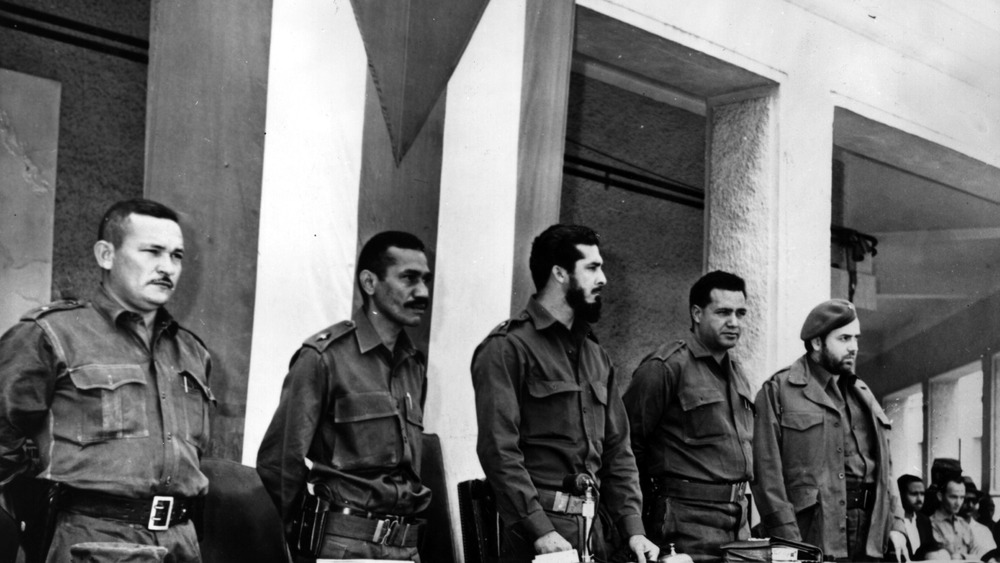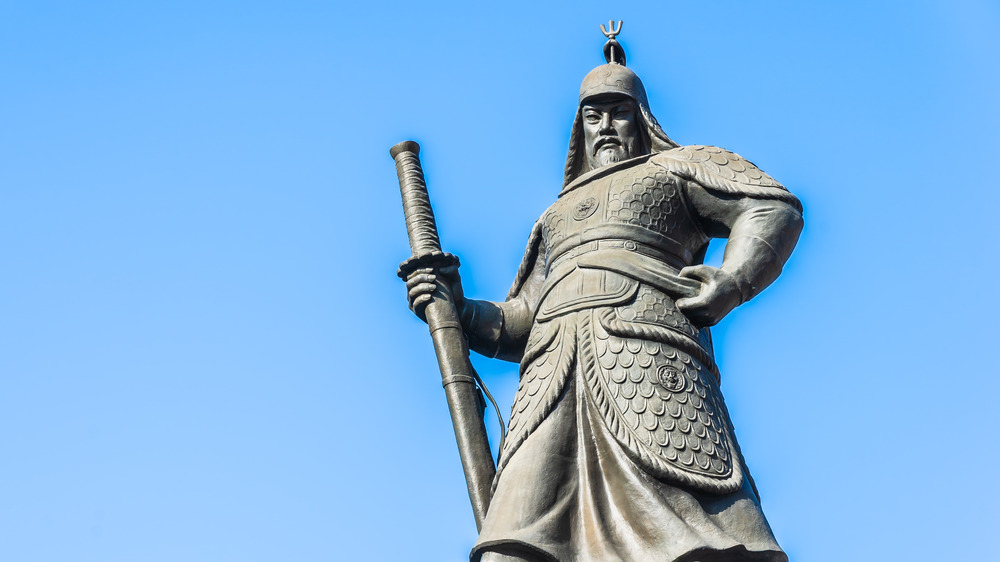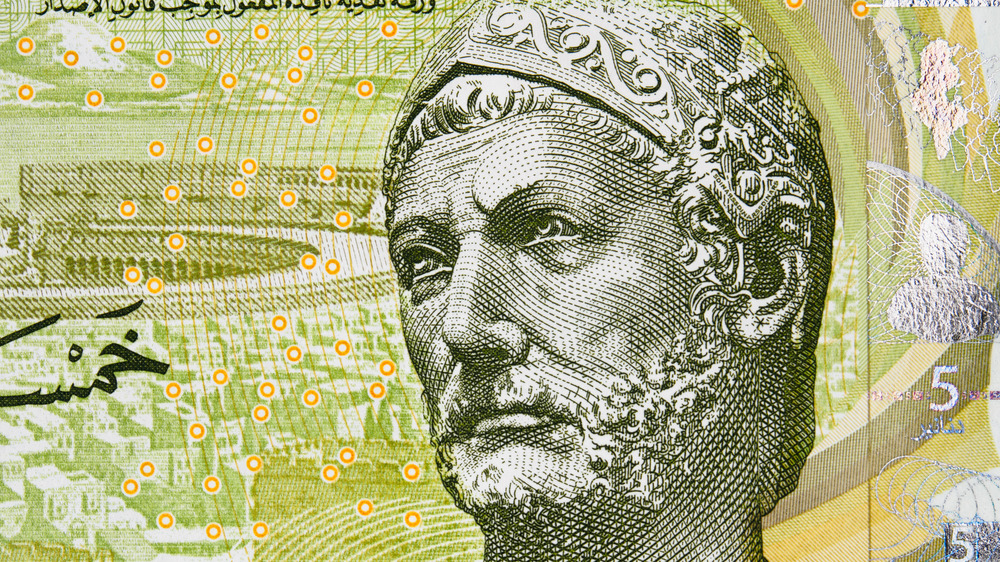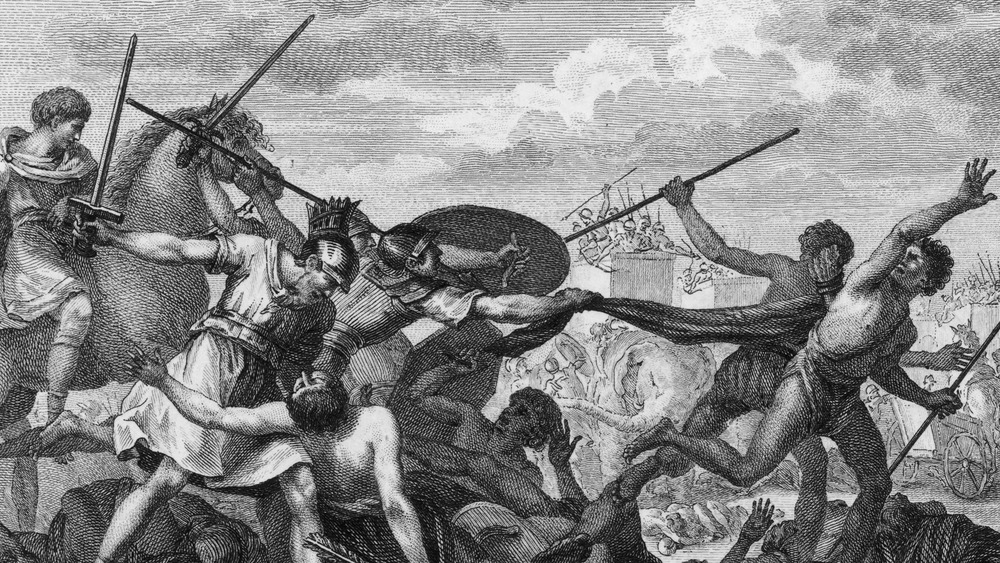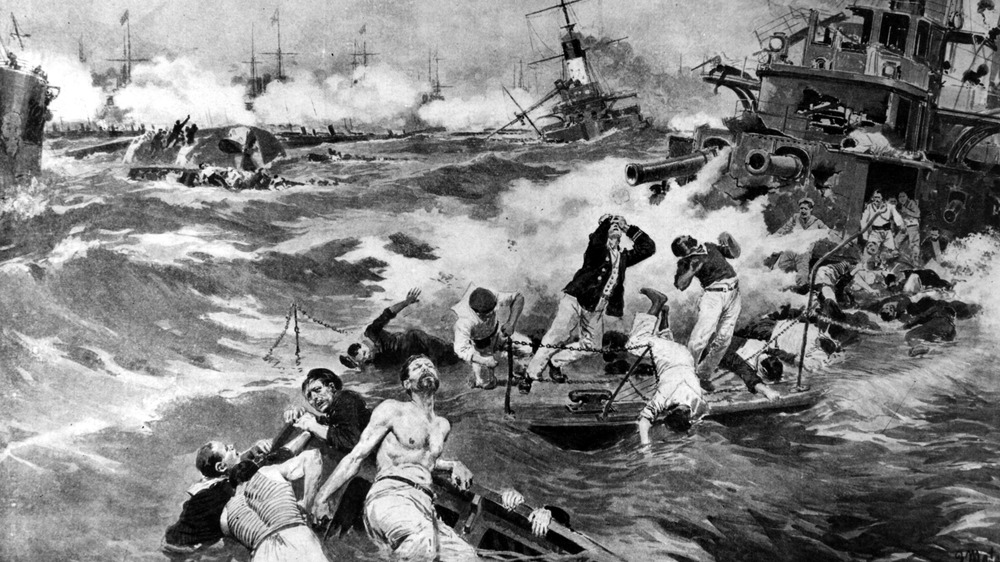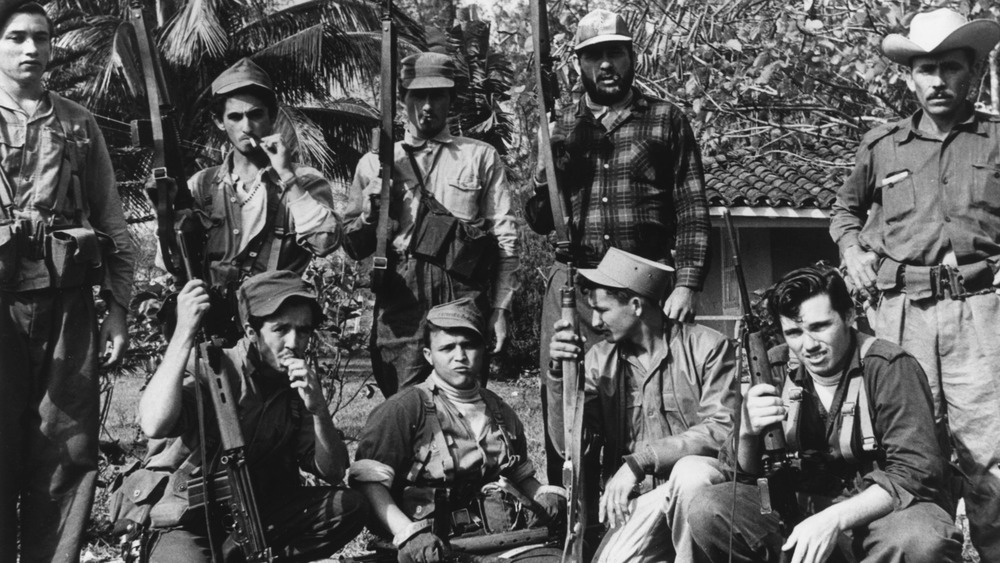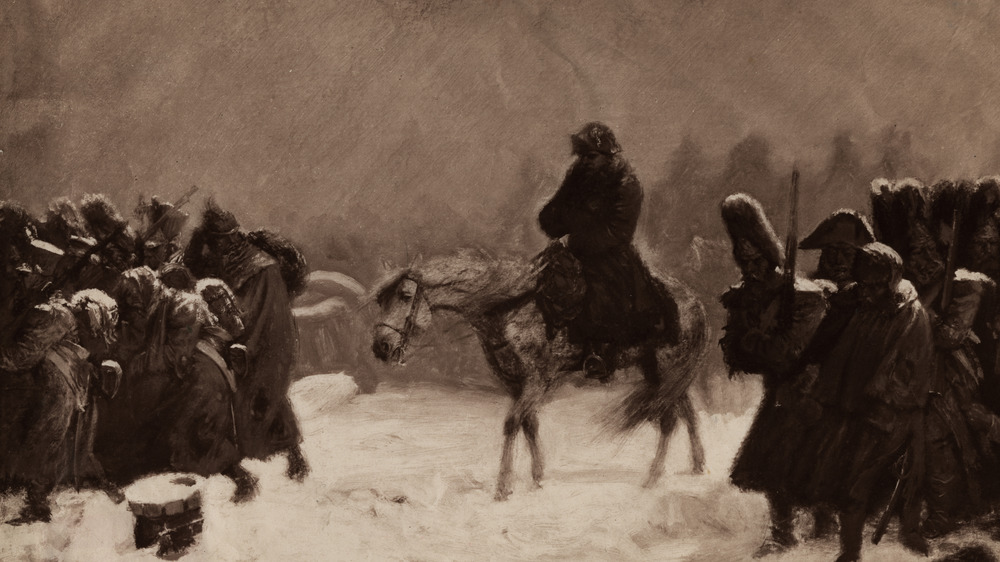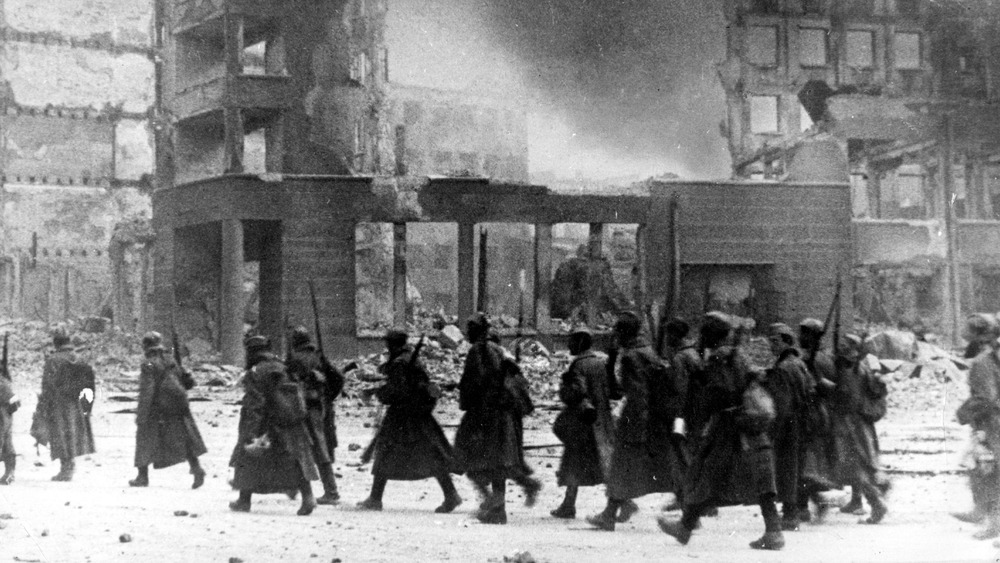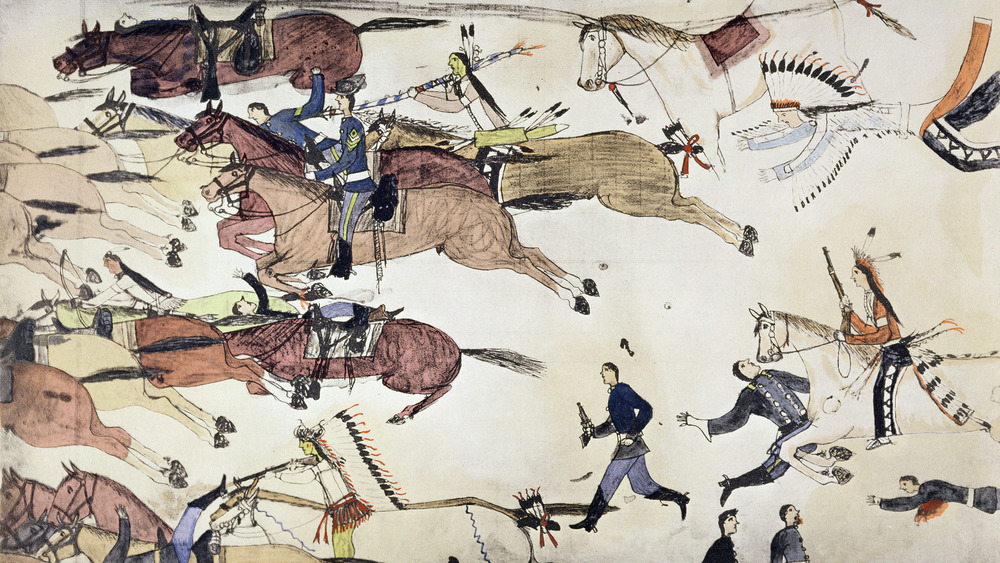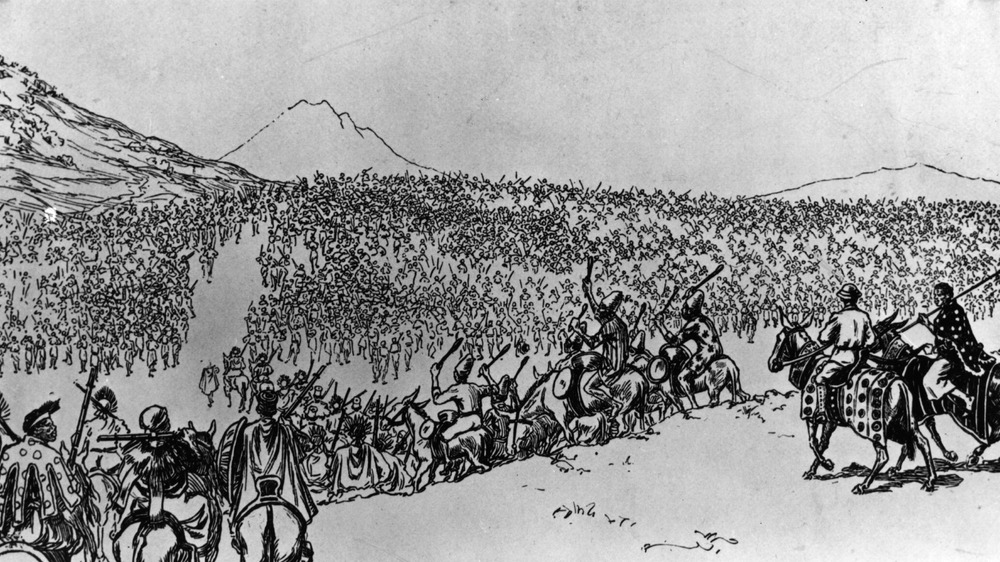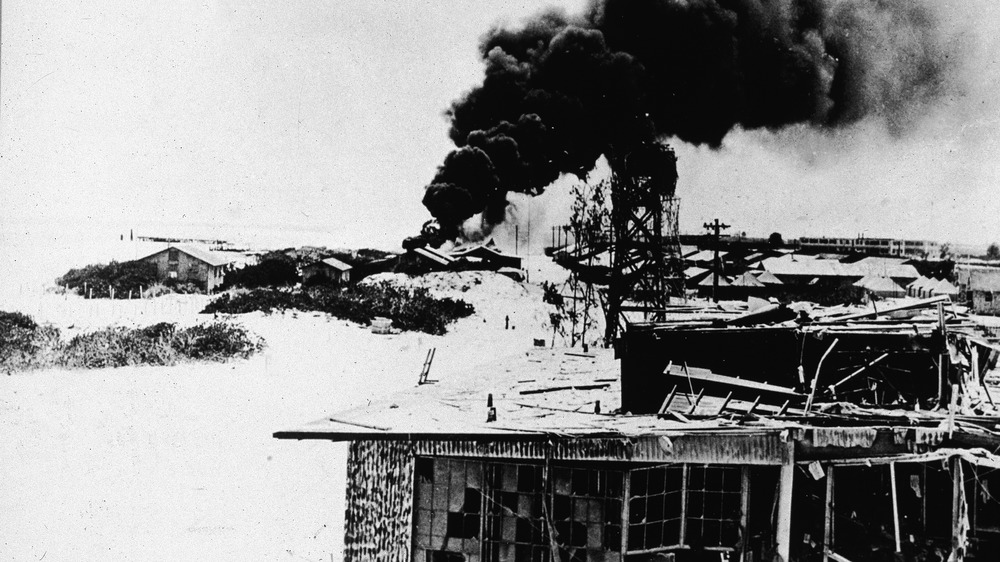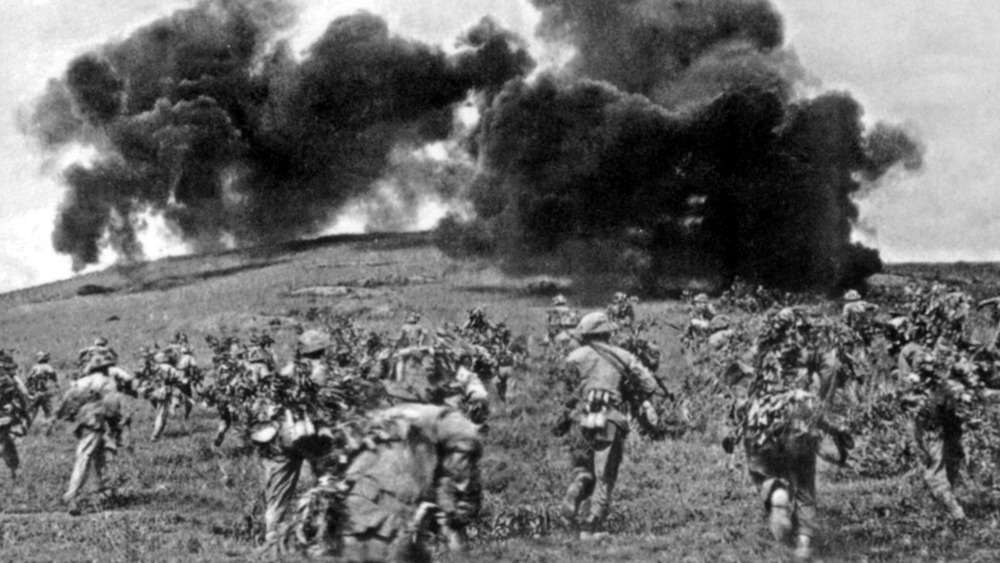Invasions That Went Horribly Wrong
While everyone makes mistakes in life, few have been made at the cost of hundreds upon thousands (and in some cases, millions) of lives. However, this is the reality of war. It takes a great deal of preparation and man and technological power to invade another land. So when all that planning and work ends not only in defeat but in complete and utter annihilation, for some armies and nations, it becomes impossible to simply shake it off and "get 'em next time."
There is no next time for the people on this list, as either their decision to invade a foreign land ended in the loss of their lives or spelled the end of their nation's sovereignty. Whether it be at the dawn of the Roman empire in the B.C. era or the heights of the Cold War a few generations back, powerful states have attempted and failed many times to conquer land.
The reasons may vary on why these invasions may have failed — underestimating the opposition force, inferior strategist going against a superior general, the terrain favoring one side over another, the weather (a lot of people for whatever reason think the first snowfall in Russia means "conquering time"), or a combination of the four and more. All that being said, the only tie that binds these battles together is that the invaders came in like a wrecking ball and left like rubble. Here is a list of invasions that went horribly wrong.
Battle of Myeongnyang in 1597
What is more improbable than winning a sea battle when the enemy holds an 11-to-1 advantage? Maybe that the person leading the battle was moments away from being executed the previous year. This was the Battle of Myeongnyang, also known as, "The Miracle at Myeongnyang," according to the History Collection.
In 1592, Japan invaded Korea. During the next five years, Japan was unable to make headway in their invasion due in large part because of the brilliance of Adm. Yi Sun-shin, according to Britannica.
However, because of enemies he made in the Joseon court, Sun-shin was arrested for treason, tortured, and demoted to a common soldier. One of his rivals, Adm. Won Gyun, took command of his fleet. Stories Preschool reports that the fleet had more than doubled in size under Sun-shin.
One year later, Gyun was dead, Korea had 12 ships left to 330 Japanese ships, and Sun-shin, in an act of desperation, was put back into command. In a brilliant plan, he enticed the Japanese to the narrow Myeongnyang Strait where Japan's numerical advantage became a disadvantage, as ships had trouble maneuvering. Early in the battle, the body of the Japanese general was found by Sun-shin and displayed as a morale booster for his soldiers. Shifting currents prevented the Japanese from retreating and Sun-shin's forces took full advantage. He lost zero ships in the battle, while the Japanese lost 31, and 90 were damaged. By 1598, Korea had ousted the Japanese invaders.
Battle of Cannae in 216 B.C.
It is truly amazing how much the Roman Empire has affected the world. It is also amazing how close Rome came to never becoming the juggernaut it became. History calls the Battle of Cannae "Rome's Darkest Day," as the Roman army was nearly wiped out because of the genius strategy of an African general who swore to his father to destroy Rome.
According to Biography, Hannibal Barca was born in 247 B.C. to Hamilcar Barca, a general for the nation of Carthage (present-day Tunisia). Following Carthage's defeat to Rome in what would become the first of three wars between the two nations, Barca's father made his son swear an oath to see Rome's destruction.
In 218 B.C., a second war between Rome and Carthage began and Hannibal Barca famously entered Italy by crossing the Alps. During the next two years, he decimated Roman legions and amassed territory and anti-Rome soldiers. Rome's consul, Quintus Fabius Maximus, decided on the strategy of not engaging with Barca, instead, being very strategic with his movements and battles, hoping to win of attrition.
According to Ancient, Rome hated this strategy and elected consuls Lucius Aemilius Paulus and Caius Terentius Varro to invade Cannae and destroy Barca with an army twice his size. Britannica states Rome bought in 80,000 men to Barca's 50,000. Rome engaged the center of Barca's army, trying to overwhelm them. Instead, the center held, and Barca's cavalry encircled the Romans, completely surrounding them. Only 14,000 Romans survived the battle.
Battle of Ilipa in 206 B.C.
If the Battle of Cannae marked the closest Rome came to being conquered, then the Battle of Ilipa marked the beginning of Rome becoming the only superpower in the Mediterranean world. As Britannica states, the battle marked the beginning of the end of Carthage's power in Spain and Hannibal Barca's goal to conquer Rome. And to add insult to injury, Rome used Barca's own strategy.
In 206 B.C., a Carthaginian army (not under Barca's command) attempted to conquer Rome's army, which was led by Cornelius Scipio. They met the Romans at Ilipa with a larger army. According to Erenow, for several days, the two armies met but did not engage outside of light skirmishes, as each side did not want to make the first move.
After several days, Scipio decided to use a strategy Barca used years prior. He made sure his men were fed before daybreak and sent his cavalry to attack at dawn, forcing the Carthaginians to the battlefield without food. Then he waited, letting hunger and fatigue set in on the Carthaginian side before engaging his calvary again. When Carthage attacked the center, they did not notice the experienced Romans were not in the center but on the wings. When the center did not break for Carthage, the Romans, with fewer troops, encircled and surrounded the Carthaginians. There were only 7,000 Roman casualties to Carthage's 44,000 casualties. The battle set the stage for Rome to invade Carthage, according to The Art of Battle.
Battle of Tsushima in 1905
Imagine traveling thousands of miles just to get humiliated. Well, that was the reality that Russia faced when in 1905, according to Arts and Culture, when their navy traveled 18,000 nautical miles to engage Japan. Also called "The Battle of Tsushima Strait" and "The Naval Battle of the Sea of Japan," the battle was a humiliating defeat for the Russians and illustrated the difference that technology would play in warfare in the 20th century.
According to History, Russia rejected Japan's desire to split Korea and Manchuria into spheres of influence. Because of this, in February of 1904, Japan launched a surprise attack on a Russian naval fleet in Port Arthur in China. This was the opening battle of the Russo-Japanese War. Russia underestimated the Japanese military might, which scored many victories over the European nation.
According to Britannica, on Oct. 15, 1904, after a summer of fine-tuning, the Russian Baltic Fleet set sail from Liepaja. Less than a week later, the ships mistakenly fired upon a British trawler, to which Russia apologized to England and paid proper compensation.
After seven months of traveling, the Russian fleet made contact with Adm. Togo Heihachiro of Japan. Thought Co says that Russia entered the Tsushima Strait with 11 battleships and eight cruisers to Japan's four battleships and 27 cruisers. Russia was woefully behind the time technology and lost two-thirds of its ships over the course of two days, ending the war and setting the stage for Russia's 1905 revolution.
Bay of Pigs in 1961
The Bay of Pigs was essentially the Eisenhower Administration noticing some gunk coming out of a faucet, walking away without saying anything, and then the Kennedy Administration turning on the faucet to find that gunk filling their water cup. According to the JFK Library, in March of 1960, the Eisenhower White House approved a program to train Cuban refugees in Guatemala in order to overthrow Fidel Castro in Cuba. A year and a month later, President John F. Kennedy sprung Eisenhower's plan into action.
After overthrowing the United States-supported dictator, Fulgencio Batista, Fidel Castro became ruler of Cuba in 1959. According to History, Castro sought to eliminate the influence the U.S. had on their nation by nationalizing American-dominated industry. By 1960, Castro had established foreign relations with the Soviet Union. The U.S. desired to remove the Soviet and communist ally from power. On April 15, 1961, the first part of the invasion began as Cuban exiles on U.S. planes attempted to destroy Cuba's air force. However, Castro and the government learned about the plan and moved the planes to another location.
Two days later and despite the failed bombardment, the exiles invaded on the island's southern shore called, "Bay of Pigs." The combined Cuban military and poor weather conditions left the exiled fighters without a prayer. According to the BBC, Kennedy did not want to send in reinforcements, as it would illustrate American involvement. By April 19, the invasion was over, and Castro would rule Cuba until 2011.
Napoleon invades Russia in 1812
While the Battle of Waterloo was the final chapter of the Napoleon Bonaparte story, it was his invasion of Russia that truly ended the golden streak he was on in continental Europe. Napoleon was a serious threat to create a lasting empire in Europe not seen since the Roman Empire. But then he invaded Russia in the winter. Well, technically the summer. According to National Geographic, Napoleon's army of over half a million troops entered Russia through Poland on June 24.
According to Lumine Learning, Napoleon and his army, known as "Le Grande Armée," marched through Russia with relative ease during the summer — despite costly and long wars France had waged during Napoleon's reign, which had lowered the morale of his army and left Napoleon sick, overweight, and unpopular in France.
Still, the army marched on and took more Russian territory. Or the remains of Russian territory. In order to prevent the French army from using supplies, the Russian army set fire to their own land as they retreated. Even when the French took Moscow, it was set ablaze. History reports that on October 19, Napoleon led his army out of Moscow, understanding they could not survive the winter.
The war of attrition and being unprepared in winter proved to be France's undoing. According to National Geographic, Napoleon lost 300,000 men out of 500,000 and was forced to leave Russia by December. This costly defeat led the European powers to finally topple Napoleon less than two years later.
Battle of Stalingrad in 1942-43
While the Battle of Berlin was the final chapter of the Adolf Hitler story, it was his invasion of the Soviet Union that truly ended the golden streak he was on in continental Europe. Hitler was a serious threat to create a lasting empire in Europe not seen since the Roman Empire. But then he invaded the Soviet Union in the winter. Déjà vu anyone?
In an almost mirror of the Napoleonic Wars, World War II saw Nazi Germany conquer vast amounts of territories on the continent with little resistance. And, like Napoleon, by the time the Germans invaded the Soviet Union, the nation was stretched thin and weary from the long years of battle.
In June 1941, Hitler launched Operation Barbarossa, an invasion of the Soviet Union and the largest military offensive in human history at the time, according to War on the Rocks. However, winter came and stalled the attack before they could reach Moscow. By August 1942, the German army set their sites on the industrial city of Stalingrad, hoping to cut off the Soviet's supply line.
For six months, the two sides battled in the winter snow. The German army conquered much of the territory early on. According to Medium, 90% of Stalingrad was in German hands. Still, the Russians held and pushed Germany back west. They would continue to be pushed west over the next two years, culminating at the Battle of Berlin and the fall of the Third Reich.
Battle of Little Big Horn or Custer's Last Stand, 1876
"Don't count your chickens before they hatch" and whatever other cliched assumptions can be used with the Battle of Little Bighorn. According to History, after the United States discovered gold on Native American reservations in the northwest, the government ignored previous treaties and invaded the territory.
In 1868, the U.S. government issued a treaty to the Lakota leaders to give up their nomadic life and be placed into reservations in South Dakota. According to NPS, while many leaders agreed to the treaty, Lakota leaders such as Sitting Bull and Crazy Horse refused and joined other Native Americans to create an armed resistance. Six years later, during an exploration of the Black Hills in South Dakota, a party led by Lt. Col. George Armstrong Custer discovered gold in the area and demanded the Lakota be placed in reservations. They refused and the Plains Indian War began.
In June 1876, while scouting in the Little Bighorn Valley, Custer and his men were spotted. Unable to regroup with the larger army, which he had divided into three separate forces before discovering the size of the Indigenous resistance, Custer and his men were killed within an hour by Crazy Horse's army of 3,000. While the battle was a glorious victory for the Native Americans, it galvanized the U.S. to further support the war effort. By the next year, Crazy Horse was forced to surrender.
Battle of Adwa in 1896
A running theme in these battles is that the more powerful invader underestimates their opponent's strength and suffers a humiliating defeat. No battle encapsulates that more than Italy's invasion of Ethiopia and the Battle of Adwa. The Conversation reports that Italy's defeat over the African nation, during the period of African imperialism, made Ethiopia a symbol of freedom throughout the African world.
According to Black Past, the opening of the Suez Canal in 1869 led Italy to take an interest in East Africa. They finally set foot in Africa in 1885 and by 1890, they established the colony nation of Eritrea. During this period, they also established good relations with Ethiopia. In 1889, Emperor Yohannes IV died, and Menilek II ascended to the throne. Menilek II had been a favorite of Italy, and the European nation supplied him with modern weaponry. Seven years later, Melinek II would use those weapons against his former friends.
According to Origins, the beginnings of the conflict was a questionable treaty in which Ethiopia would become a protectorate, though Melinek II rejected this interpretation. The two sides soon found themselves in armed combat for Ethiopia. Lack of knowledge of the size of the Ethiopian army and pressure from Italian politicians led an Italian army of around 15,000 to attempt to face 100,000 Ethiopians. Needless to say, Italy was overrun and forced out of Ethiopia. At the Treaty of Addis Ababa, Ethiopian sovereignty was recognized, and Italy was left humiliated for their invasion failure.
Battle of Midway in 1942
Following the bombing of Pearl Harbor and the conquest of their Pacific colonies, the U.S. spent the next months licking their wounds and building up their military as they prepared to enter WWII in a two-front war against Japan in Asia and Germany and Italy in Europe. Six months after the Pearl Harbor attacks, the U.S., according to Britannica, ended the threat of further Japanese invasions in the Pacific with a victory at Midway.
The Japanese invasion at Midway was discovered by U.S. code-breakers who intercepted a message that gave them the location and date of the attack, according to the National WWII Museum. Early on June 4, 1942, the Japanese army attacked and damaged the base at Midway, not knowing that the U.S. had moved to the eastern part of the island and had launched a counter attack when the Japanese turned to refuel and re-arm. Over the next two days, the Japanese lost 3,057 men, four carriers, one cruiser, and hundreds of aircraft, while the U.S. lost approximately 362 men, one carrier, one destroyer, and 144 aircraft.
According to War on the Rocks, the Pacific theater that once saw the Japanese act and the U.S. react would see the reverse the rest of the war because of Midway. Also, the victory freed the Allied forces to focus primarily on the European stage of the conflict, as the Axis powers continued to expand their territory throughout Europe and North Africa.
Battle of Dien Bien Phu in 1954
After the Axis powers were defeated in WWII, France hoped to return to business as usual and continue to operate as an imperial power in Indochina. The only issue was that the Vietnamese did not get that memo, and similar to France under German occupation, they wanted to be independent as well. This led to the First Indochina War in 1946. France entered the territory hoping to reestablish their control of the land. After eight years of fighting, the war concluded with the Battle of Dien Bien Phu.
According to History, the assault on the French-occupied Dien Bien Phu began in March of 1954. Viet Minh commander Vo Nguyen Giap placed gathered troops and heavy artillery into mountain caves overlooking the French camp. For nearly two months, the constant bombardment and troop power of the Vietnamese wore down the French who, according to a first-hand account, were surviving on cigarettes and coffee in the final days.
By May 7, the resistance ended after one last assault on the base. By this time, France could muster only around 3,000 Frenchmen to 20,000 Viet Minh soldiers. Alpha History reports less than 3,500 of the 11,000 French stationed at Dien Bien Phu survived the two months. At the Geneva Accords in July, France lost all claims in Indochina, which included Vietnam, Laos, and Cambodia. The U.S. would continue France's war in Vietnam in the following decade but would be met with the same results as France.
